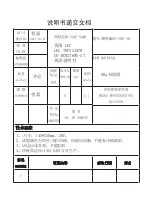
62-61753-21
8-6
1
2
3
4
5
1. Filter Outlet
2. Filter Inlet
3. Engine Inlet
4. Engine Outlet
5. Oil Pressure Switch
Figure 8-6. Lube Oil Flow Diagram
8.4.8 Engine Air Cleaner
Inspection
The dry type air cleaner should be inspected regularly
for leaks. A damaged air cleaner or hose can seriously
affect the performance and life of the engine. The air
cleaner is designed to effectively remove contaminants
from the air stream entering the engine. An excessive
accumulation of these contaminants in the air cleaner
will impair its operation; therefore, a service schedule
should be set up and followed. The following simple
service steps are easily made while the engine is be-
ing serviced in the field:
a. Check all connections for mechanical tightness. Be
sure cleaner outlet pipe is not fractured.
b. In case of leakage and if adjustment does not cor-
rect the trouble, replace necessary parts or gaskets.
Swelled or distorted gaskets must always be re-
placed.
c. To remove air cleaner, unlatch cover, turn counter-
clockwise and lift out and away from the unit. Check
condition of paper element by shining a light through
it. If is is dirty or plugged, replace element.
8.4.9 Engine Speed Adjustment
a. Engine speed may be determined using a strobe
tachometer. (Carrier Transicold Part No. 07-00206.)
or by checking the Unit Data "ENGINE RPM" read-
ing (refer to Section 3.13). To use a strobe; with the
engine stopped, place a mark (white paint for exam-
ple) on the crankshaft sheave.
b. Current draw may be measured using a clamp
on ammeter (Carrier Transicold Part Number
07-00229-00) at PSCON, PSCON2 or GENCON as
applicable or by checking the Unit Data "UNIT AC
CURRENT #1 & UNIT AC CURRENT #2" readings
(refer to Section 3.13).
c. Start the unit in Cool Mode.
d.
To check or set high speed
, press the Manual
Defrost key. If unit will not enter Defrost, refer to
Section 3.9.
e. Check unit data readings for current at AC-1 & AC-2
and engine speed. Engine speed should be
1860 RPM, Current should be 9A.
1
2
3
4
4
1. Speed Lever (Shown in low speed position)
2. Low Speed Adjustment Screw
3. High Speed Adjustment Screw
4. Jam Nut
Figure 8-7. Engine Speed Adjustment
f. To Increase Speed (see Figure 8-7):
Loosen jam nut on the high speed adjustment
screw. Turn capscrew counter-clockwise until cor-
rect speed is achieved, then tighten jam nut and re-
check engine speed.
g. To Decrease Speed:
Loosen jam nut on the high speed adjustment
screw. Turn capscrew clockwise until correct speed
is achieved, then tighten jam nut and recheck en-
gine speed.
h.
To check or set low speed
, place the machine into
Silent Mode by setting the silent mode functional pa-
rameter to "YES". (Refer to Section 3.15).
NOTE
DO NOT disconnect the Speed Control Sole-
noid (SCS).
i. Check unit data readings for current at AC-1 & AC-2
and engine speed. Engine speed should be
1440 RPM, Current should be 7.0A.
j. To Increase Speed (see Figure 8-7):
Loosen jam nut on the low speed adjustment screw.
Turn capscrew clockwise until correct speed is
achieved, then tighten jam nut and recheck engine
speed.
k. To Decrease Speed:
Loosen jam nut on the low speed adjustment screw.
Turn capscrew counter-clockwise until correct speed
is achieved, then tighten jam nut and recheck en-
gine speed.
Summary of Contents for NDK33BN0KB
Page 2: ......
Page 3: ...OPERATION SERVICE MANUAL for VECTOR 1550 1550 CITY Trailer Refrigeration Units...
Page 4: ......
Page 14: ......
Page 22: ...62 61753 21 1 8 1 5 SAFETY DECALS 62 61343 00 Rev or 62 02139 01 Rev C 62 02143 00 Rev...
Page 24: ...62 61753 21 1 10 62 60192 00 Rev D...
Page 30: ...62 61753 21 2 6...
Page 48: ......
Page 212: ......
Page 226: ......
Page 248: ......
Page 252: ......
Page 262: ......
Page 270: ......
















































